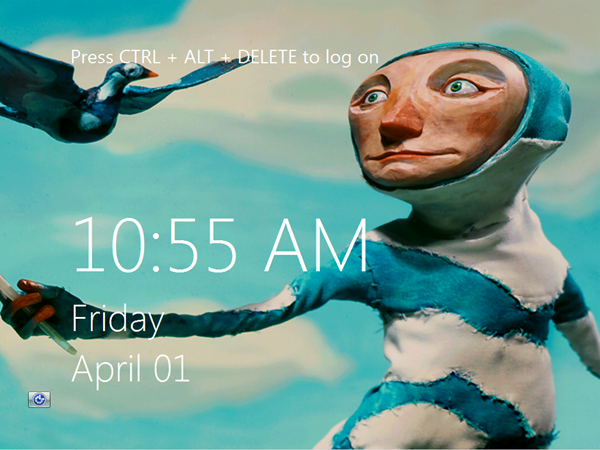Early build of Windows 8 suggests cross-platform OS to compete with Apple's iOS
A series of posts by Paul Thurrott and Rafael Rivera of Within Windows details new features in Microsoft's upcoming Windows 8 release that may hint at compatible smartphone and tablet versions of the operating system, as reported by eWeek.
The features include a Welcome/Unlock Screen similar to that of Windows Phone 7, new Ribbon UI for Windows Explorer and a document reader that uses a new packaged application model that "closely resembles Windows Phone 7 application packages."
"For this reason, we surmise that the AppX application type could be common to both Windows 8 and Windows Phone 8 (codenamed “Apolloâ€)," the authors continued, "providing developers with a way to write applications that target and can transition between a variety of devices, including traditional PCs, tablets, and phones."
It should be noted, however, that none of the features are close to final and could change significantly as Microsoft continues to work on Windows 8. Thurrott and Rivera wrote that "in early builds of Windows 8, this Ribbon UI is only half-finished and, frankly, of dubious value."
Source: Within Windows
Adding to the mounting evidence of a cross-platform strategy from Microsoft is the January news that Microsoft is working on a port of Windows 8 to ARM's System on a Chip (SoC) architecture.
ARM's chip designs, which make an appearance in Apple's A4 and A5 SoCs, have rapidly outsold Intel's X86 chips, which have struggled to meet the low-power requirements of modern mobile devices, in the mobile market.
Windows everywhere
During a January keynote at CES, Microsoft CEO Steve Ballmer alluded to the company's multi-device strategy for Windows. "Whatever device you use...Windows will be there." he said. "Windows PCs will continue to adapt and evolve. Windows will be everywhere on every device without compromise."
Sales of Windows Phone 7 smartphones have been muted since the platform launched last fall, but the recent announcement of a long-term partnership between Nokia and Microsoft could ramp up sales in coming years.
Nokia and Microsoft jointly announced in February that Nokia, the world's largest phone maker, will abandon its Symbian operating system in favor of Windows Phone 7. Recently released predictions by Gartner project that Windows smartphones will climb from a dwindling 9 percent market share in 2009 past Apple's iPhone to a 20 percent share in 2011, even as Symbian drops from 47 percent to 0 percent.
Tablet pressure
Microsoft's board has put pressure on Ballmer to improve the company's performance in the mobile space. Last year, an SEC filing revealed that the CEO had been criticized for "the unsuccessful launch of the Kin phone; loss of market share in the company's mobile phone business; and the need for the company to pursue innovations to take advantage of new form factors."
Those "new form factors" seemed to be a reference to Apple's iPad, which saw a successful launch earlier that year. In July 2010, Ballmer admitted that Apple had "sold more [iPads] than I'd like them to sell," and that tablets were one of the "top issues" on his mind.
The failure of the HP Slate, a joint project between Microsoft and HP, to gain traction after its release last year is also driving the Windows giant's efforts to break into the tablet market. Though HP announced that sales of the Slate "exceeded expectations," insiders have suggested that HP only planned to sell 5,000 Slates and had to retool to manufacture the 9,000 units necessary to meet backordered demand.
New challengers
Meanwhile, Apple and Microsoft aren't the only two companies facing off in the battle for mobile. HP has invested heavily in the webOS platform it acquired through its purchase of Palm. As the world's largest PC maker, the company also plans to scale webOS up to PCs in a cross-platform move that will challenge Microsoft on its home turf.
Google is busy putting the finishing touches on its tablet-specific Android 3.0 Honeycomb, which will make its way into numerous Android-based iPad competitors later this year. Last month, the search giant closed the source code for Honeycomb in order to prevent manufacturers from implementing the version for phones. After subsequent reports suggested that Android was becoming more closed, Android mastermind Andy Rubin promised that the code would be reopened once Google's engineers finished their revisions.
 Josh Ong
Josh Ong













 William Gallagher and Mike Wuerthele
William Gallagher and Mike Wuerthele
 William Gallagher
William Gallagher
 Wesley Hilliard
Wesley Hilliard
 Andrew Orr
Andrew Orr



 Amber Neely
Amber Neely






